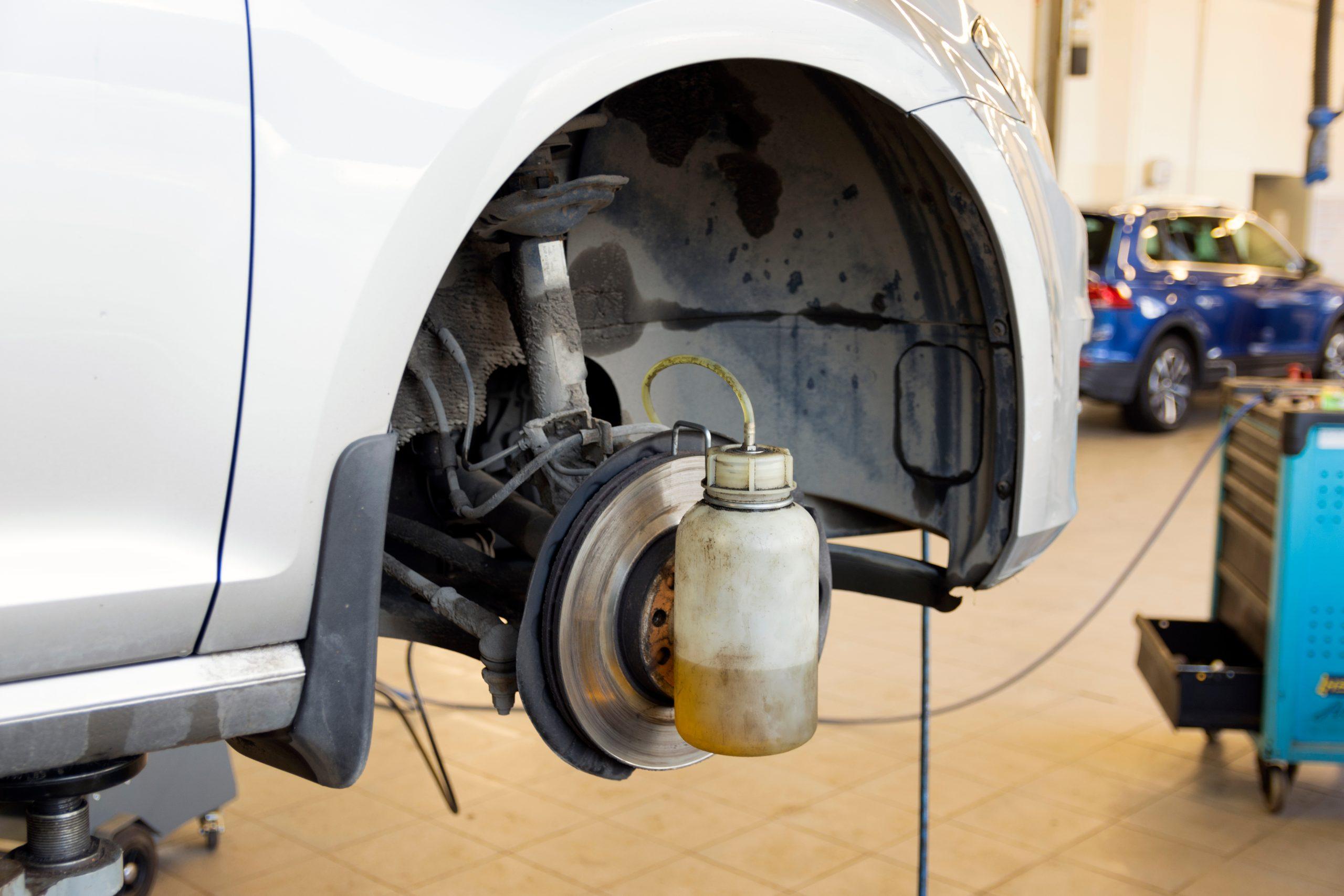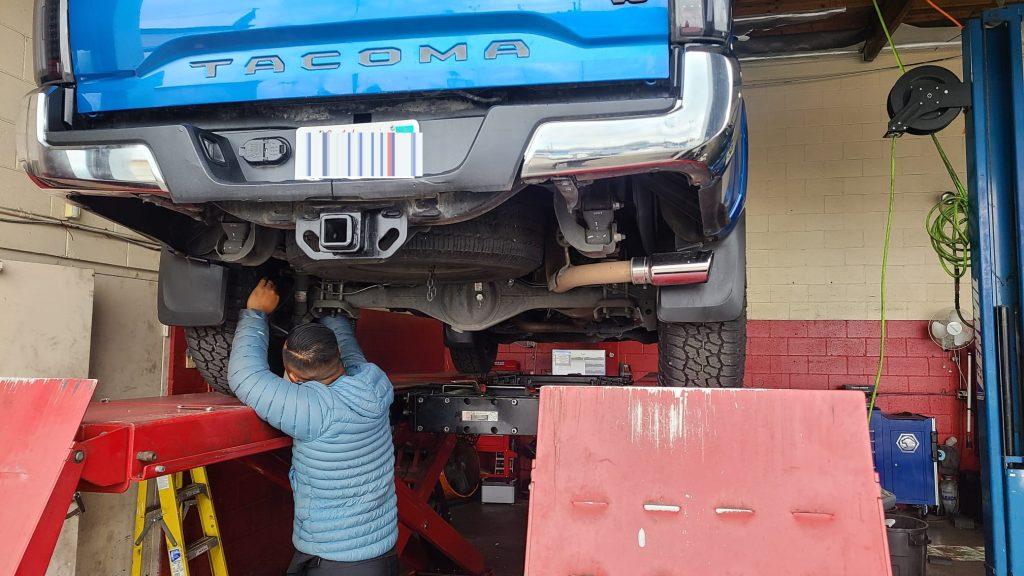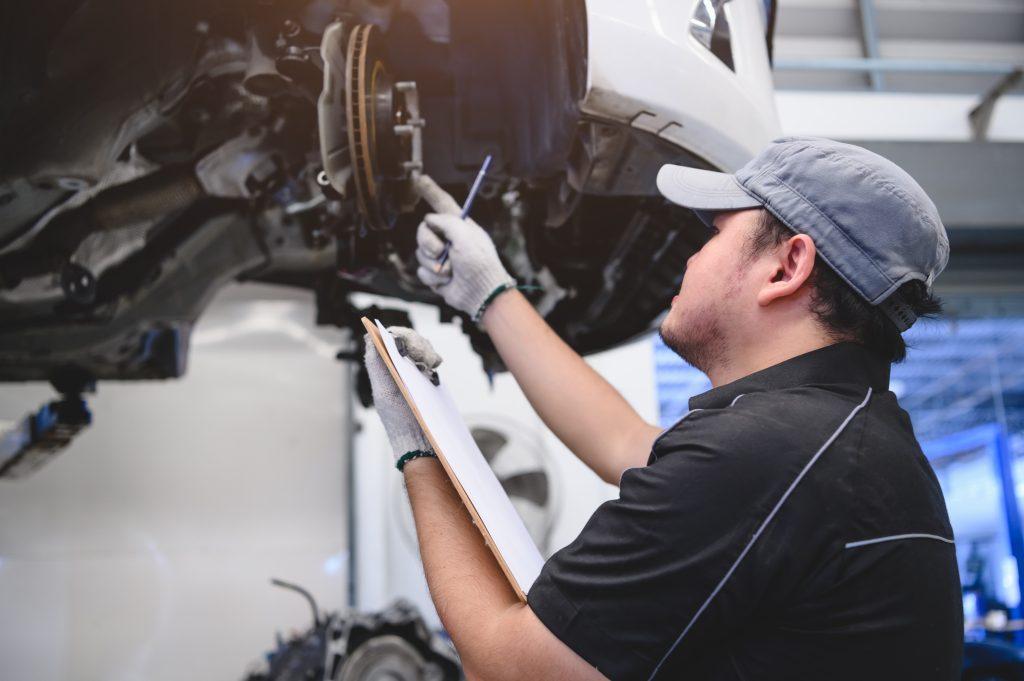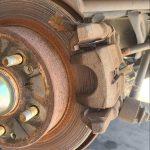
The Importance and Process of a Brake System Flush
- Harbor Brakes
- December 11, 2023
- Brakes
- brake, brake caliper, brake disc, brake fluid, brake flush, brake maintenance, brake pads, brake repair, brake rotors, brake service, pads, rotors
A brake system flush is a vital maintenance procedure to ensure effective braking and overall vehicle safety. It involves replacing old brake fluid with fresh fluid to prevent moisture buildup and degradation of braking performance. Regular brake system flushes, performed every 30,000 miles or every two years, are crucial for optimal brake maintenance. While it is possible to do a brake system flush at home, it is recommended to have trained professionals using specialized equipment perform the task for the best results.
Key Takeaways:
- A brake system flush is essential for maintaining effective braking and vehicle safety.
- It involves replacing old brake fluid with fresh fluid to prevent moisture buildup and degradation of braking performance.
- The process should be done every 30,000 miles or every two years.
- Trained professionals using specialized equipment are recommended for performing a brake system flush.
- Signs indicating the need for a brake system flush include a soft or spongy brake pedal, the ABS dashboard light coming on, ineffective braking performance, and strange sounds or odors while braking.
What is a Brake Fluid Flush?
A brake fluid flush is a crucial maintenance procedure for maintaining the effectiveness of the brake system. It involves replacing old brake fluid with fresh fluid to ensure optimal braking performance and overall vehicle safety. This procedure is necessary for both drum and disc brake systems and should be performed regularly as part of routine brake maintenance.
There are two types of brake fluid flushes: a chemical flush and a routine maintenance flush. A chemical flush involves cleaning the brakes with a chemical solution, which helps remove any contaminants or buildup that may affect the performance of the brakes. On the other hand, a routine maintenance flush simply involves draining the old fluid from the brake system and replacing it with new fluid.
When deciding which type of brake fluid flush to perform, it is important to consider the condition of the brake system and consult with a professional mechanic. They can assess the condition of the brake fluid and recommend the appropriate flush based on the specific needs of the vehicle.
Benefits of a Brake Fluid Flush:
- Enhances brake performance
- Prevents moisture buildup
- Extends the lifespan of the brake system
- Improves overall vehicle safety
“Regular brake fluid flushes can significantly improve the performance and longevity of your brakes. By replacing the old fluid, you ensure that your brakes are operating at their optimal level, providing you with the necessary stopping power and control.”
| Common Signs That You Need a Brake Fluid Flush |
|---|
| Soft or spongy brake pedal |
| ABS dashboard light comes on |
| Ineffective braking performance |
| Strange sounds or odors while braking |
If you experience any of these signs, it is crucial to have your brake system inspected and consider getting a brake fluid flush to ensure the safety and performance of your vehicle.
How Does Flushing Brake Fluid Process Work?
Flushing brake fluid is a precision procedure that should be performed by a professional mechanic. The process involves draining the old fluid from each brake valve and replacing it with fresh fluid. It requires careful coordination between two technicians, with one opening the brake valve and the other pumping the brakes to force the old fluid out. The process is repeated until clean, new brake fluid flows to the brakes. A road test is then conducted to ensure the effectiveness of the flush. While it is possible to do a brake fluid change at home, professional mechanics equipped with specialized equipment can perform the task more efficiently.
During the brake fluid flush process, it is important to work in a clean and controlled environment to prevent any contaminants from entering the braking system. The technician starts by locating the brake fluid reservoir and attaching a specialized brake bleeder tool. One technician opens the brake valve while the other operates the brake pedal, causing the old fluid to be forced out through the brake bleeder tool. This process is repeated for each brake valve until clean fluid is flowing through the system.
Once the brake fluid has been completely flushed, a road test is conducted to ensure that the brakes are working properly. This involves driving the vehicle and applying the brakes to test for any abnormalities or issues. If any problems are detected, further adjustments or repairs may be necessary.
| Steps in Flushing Brake Fluid | Benefits |
|---|---|
| 1. Locate the brake fluid reservoir and attach a brake bleeder tool. | – Removes old, contaminated fluid |
| 2. Open the brake valve and have another technician operate the brake pedal to flush out the old fluid. | – Prevents moisture buildup, improves brake performance |
| 3. Repeat the process for each brake valve until clean fluid flows through. | – Restores additive package levels |
| 4. Conduct a road test to ensure proper brake function. | – Prevents corrosion of braking system components |
Overall, the brake fluid flush process is a crucial aspect of brake maintenance that ensures optimal braking performance and vehicle safety. By replacing the old fluid with fresh fluid, it helps prevent moisture buildup and degradation of the braking system. It is recommended to have this procedure done by trained professionals who have the necessary equipment and expertise to perform the task effectively and efficiently.
Why is a Brake Fluid Flush Important for Brake Performance?
A brake fluid flush is a critical aspect of brake maintenance that you shouldn’t overlook. It plays a crucial role in ensuring optimal brake performance and overall vehicle safety. But why exactly is a brake fluid flush so important?
Enhanced Braking Performance
Over time, brake fluid tends to absorb moisture, which can adversely affect its performance. Moisture contamination can lower the boiling point of the fluid, leading to decreased braking efficiency. This can result in longer stopping distances and compromised safety on the road. By flushing out old brake fluid and replacing it with fresh fluid, you can restore the additive package levels and maintain the optimal performance of your brakes.
Prevention of Corrosion
Regular brake fluid flushes are crucial for preventing the corrosion of braking system components. As brake fluid ages, it can become acidic and start corroding metal parts within the braking system. This corrosion can lead to brake system failure or costly repairs. Flushing the brake fluid at recommended intervals helps remove impurities and contaminants, keeping your braking system in top condition and avoiding unnecessary expenses.
Longevity of Brake Components
A brake fluid flush can also contribute to the longevity of your brake components. By regularly replacing the fluid, you can prevent the buildup of contaminants and debris that can cause premature wear and tear on brake parts. This helps extend the lifespan of your brake pads, rotors, and other components, ultimately saving you money on expensive repairs or replacements.
Overall, a brake fluid flush is an investment in your safety and the performance of your vehicle’s braking system. By maintaining clean and fresh brake fluid, you can enjoy enhanced braking performance, prevent corrosion, and increase the longevity of your brake components. Remember to consult a professional mechanic for this maintenance procedure to ensure it is done correctly and efficiently.
Table: Benefits of a Brake Fluid Flush
| Benefits | Explanation |
|---|---|
| Enhanced Braking Performance | Replacing old brake fluid with fresh fluid improves braking efficiency and reduces stopping distances. |
| Prevention of Corrosion | Regular flushes remove impurities from the braking system, preventing corrosion and costly repairs. |
| Longevity of Brake Components | Flushing brake fluid helps prevent premature wear and tear on brake parts, extending their lifespan. |
Five Signs That You Need a Brake Fluid Flush
If you want to ensure optimal brake performance and maintain the safety of your vehicle, it’s important to pay attention to the signs that indicate the need for a brake fluid flush. By replacing old brake fluid with fresh fluid, you can prevent contamination and degradation of the braking system. Here are five signs that it’s time for a brake fluid flush:
- Soft or spongy brake pedal: If you find that your brake pedal feels soft or spongy when you apply pressure, it could be a sign that there is air or moisture in the brake fluid. A brake fluid flush can help remove these contaminants and restore the firmness of your brake pedal.
- ABS dashboard light coming on: The ABS (Anti-lock Braking System) dashboard light can indicate several issues, including low brake fluid or a problem with the ABS system itself. If the light comes on, it’s a good idea to have your brake fluid checked and flushed if necessary.
- Ineffective braking performance: If you notice that your vehicle takes longer to stop or the brakes feel less responsive, it could be a sign of contaminated brake fluid. Dirty or degraded fluid can affect the performance of your brakes and compromise your safety on the road.
- Strange sounds or odors while braking: Unusual sounds, such as squealing or grinding, or unpleasant odors, could indicate that your brake fluid needs to be replaced. Contaminated fluid can cause corrosion or damage to the brake system, leading to these symptoms.
- Routine maintenance: Brake fluid flushes are an essential part of routine brake maintenance. Even if you don’t notice any specific signs of a problem, it’s still recommended to have your brake fluid flushed every 30,000 miles or every two years to ensure optimal performance and safety.
By recognizing these signs and taking prompt action, you can avoid potential brake issues and keep your vehicle operating at its best. If you experience any of these signs, it’s important to consult a professional mechanic who can perform a brake fluid flush and ensure the integrity of your braking system.
| Signs That You Need a Brake Fluid Flush | Action Required |
|---|---|
| Soft or spongy brake pedal | Have your brake fluid flushed to remove air or moisture and restore brake pedal firmness. |
| ABS dashboard light coming on | Check your brake fluid levels and consider a brake fluid flush if the light persists. |
| Ineffective braking performance | Have your brake fluid replaced to improve braking response and ensure safety. |
| Strange sounds or odors while braking | Get your brake fluid flushed to prevent corrosion and damage to the brake system. |
| Routine maintenance | Even without specific signs, have your brake fluid flushed every 30,000 miles or every two years to maintain performance and safety. |
FAQs about Brake Fluid Flush
If you have questions about brake fluid flushes, we’ve got you covered. Here are some frequently asked questions to help you better understand this important maintenance procedure:
1. How often should I have a brake fluid flush?
The recommended frequency for a brake fluid flush is every 30,000 miles or every two years, whichever comes first. However, it’s always a good idea to consult your vehicle’s owner’s manual or check with a professional mechanic for specific recommendations based on your driving habits and conditions.
2. Can I do a brake fluid flush at home?
While it is possible to perform a brake fluid flush at home, it is best to have it done by trained professionals. They have the knowledge, experience, and specialized equipment to ensure a thorough and effective flush. DIY attempts may not yield the same results and could lead to improper brake system maintenance.
3. How much does a brake fluid flush cost?
The cost of a brake fluid flush can vary depending on factors such as the vehicle make and model, location, and the service provider. On average, you can expect to pay between $70 and $150 for a brake fluid flush. It’s always a good idea to get quotes from different mechanics or service centers to compare prices and ensure you’re getting a fair deal.
Remember, the cost of a brake fluid flush is a small investment compared to the potential costs of brake system repairs or accidents caused by compromised braking performance.
By understanding the importance of a brake fluid flush and having your questions answered, you can make informed decisions about maintaining the safety and performance of your vehicle’s braking system.
| Question | Answer |
|---|---|
| How often should I have a brake fluid flush? | Every 30,000 miles or every two years. |
| Can I do a brake fluid flush at home? | It is best to have it done by trained professionals. |
| How much does a brake fluid flush cost? | The cost can vary between $80 and $140. |
Conclusion
A brake fluid flush is a crucial maintenance procedure for maintaining effective braking and overall vehicle safety. By replacing old brake fluid with fresh fluid, it prevents moisture buildup and degradation of braking performance. Regular flushes can improve brake performance, prevent costly repairs, and ensure optimal vehicle safety.
It is recommended to have a professional mechanic perform the brake fluid flush for the best results. They have the expertise and specialized equipment to accurately drain and replace the fluid, ensuring that your brake system operates at its peak performance. Don’t compromise on safety when it comes to your brakes.
Remember, a brake flush is not just about maintaining your brakes, it’s about protecting yourself and others on the road. Keeping your brake system in top condition is essential for safe driving and preventing accidents. So, don’t delay, schedule a brake fluid flush today and enjoy peace of mind knowing that your brakes are working at their best.
FAQ
What is a brake fluid flush?
A brake fluid flush is a maintenance procedure that involves replacing old brake fluid with fresh fluid to maintain the effectiveness of the brake system. It prevents moisture buildup and degradation of braking performance.
How does the flushing brake fluid process work?
The process involves draining the old fluid from each brake valve and replacing it with fresh fluid. Two technicians work together, with one opening the brake valve and the other pumping the brakes to force out the old fluid. This process is repeated until clean, new fluid flows to the brakes.
Why is a brake fluid flush important for brake performance?
Brake fluid is hygroscopic, meaning it absorbs moisture over time. This moisture can lower the boiling point of the fluid and degrade brake performance. A brake fluid flush replaces old fluid, removes impurities, and improves brake performance, ensuring optimal safety.
What are the signs that indicate the need for a brake fluid flush?
Signs include a soft or spongy brake pedal, the appearance of the ABS dashboard light, ineffective braking performance, strange sounds or odors while braking, and as part of routine maintenance. These signs indicate that the brake fluid is contaminated or degraded and needs to be replaced.
Can I do a brake fluid flush at home?
While it is possible to do a brake fluid change at home, it is best performed by professional mechanics with specialized equipment. They can perform the task more efficiently and ensure a thorough flush for optimal brake performance.
How often should I have a brake fluid flush?
A brake fluid flush should be done every 30,000 miles or every two years, whichever comes first. Regular flushes are recommended to maintain optimal braking performance and safety.
Source Links
- https://www.chapelhilltire.com/is-brake-fluid-replacement-necessary/
- https://nubrakes.com/blog/brake-fluid-flush/
- https://rivergatemuffler.com/2020/12/what-are-the-benefits-of-brake-fluid-flushes/




